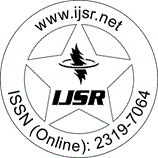Downloads: 1
India | Physiotherapy | Volume 14 Issue 11, November 2025 | Pages: 295 - 298
Impact of Sustained Natural Apophyseal Gliding Technique on Neck Pain and Cervical Range of Motion in Subjects with Cervicogenic Headache
Abstract: Background and Purpose: Cervicogenic headache is a secondary type of headache that can be defined as the pain experienced in head but the real source is found on the cervical spine. Cevicogneic headache includes headache associated with neck pain and stiffness. Cervicogenic headaches are unilateral, starting from one side of the posterior head and neck, migrating to the front and sometimes are associated with ipsilateral arm discomfort. C1-C2 Sustained natural apophyseal Gliding Technique is used to reduce neck pain and improve cervical range of motion in subjects with cervicogenic headache. Many studies focused on different methods, but very few studies aimed to compare. Methodology: 20 cervicogenic headache patients were randomized into two groups. Group A receives Sustained natural apophyseal gliding technique whereas Group B receives placebo SNAG technique for Duration of 8 weeks. Neck Disability Index is used to assess the neck pain and cervical range of motion before and after the treatment. Result: The group analysis of Group A revealed that there is a significant effect in experimental group by using Neck disability index as a outcome measure with p value <0.0001. Conclusion: The Sustained Natural apophyseal gliding technique is effective in decreasing neck pain and increases cervical range of motion in subjects with cervicogenic headache.
Keywords: Sustained natural apophyseal glide, SNAG
How to Cite?: K. V. K. Bhuvaneswar, Irfan Sharif Shaik, B. Satya Haveela, "Impact of Sustained Natural Apophyseal Gliding Technique on Neck Pain and Cervical Range of Motion in Subjects with Cervicogenic Headache", Volume 14 Issue 11, November 2025, International Journal of Science and Research (IJSR), Pages: 295-298, https://www.ijsr.net/getabstract.php?paperid=SR251101104047, DOI: https://dx.doi.org/10.21275/SR251101104047
